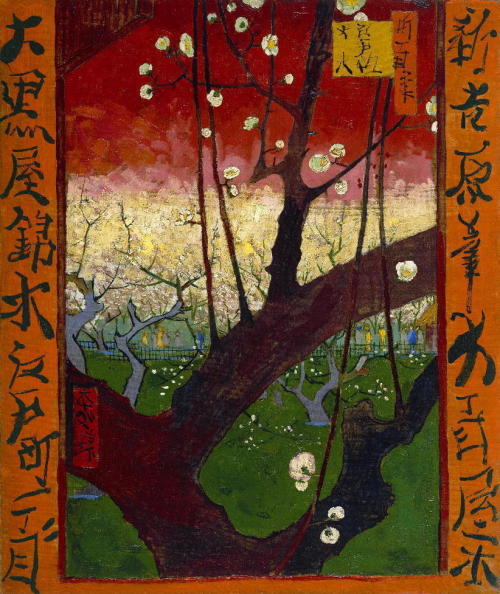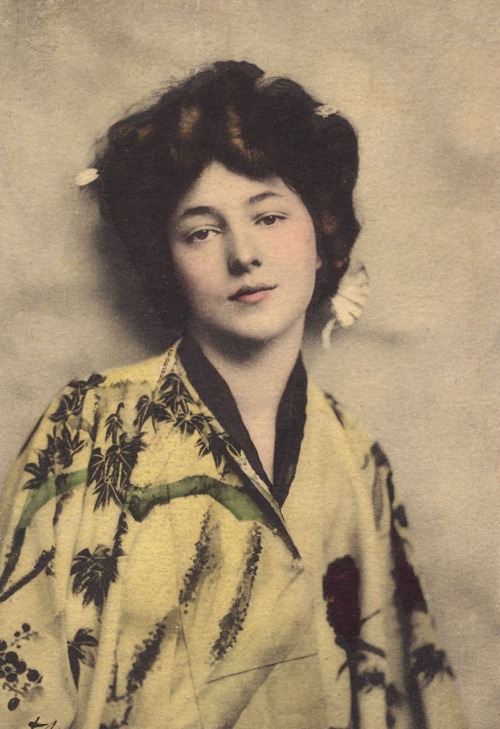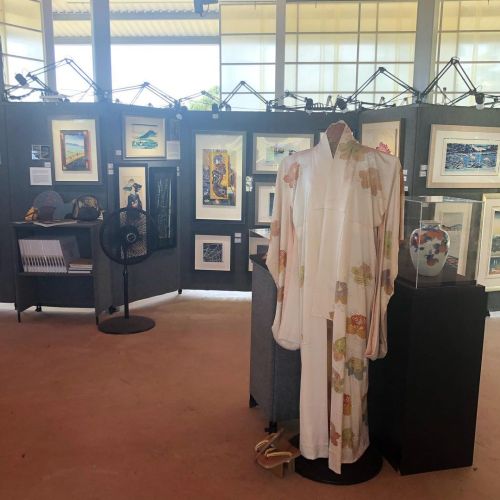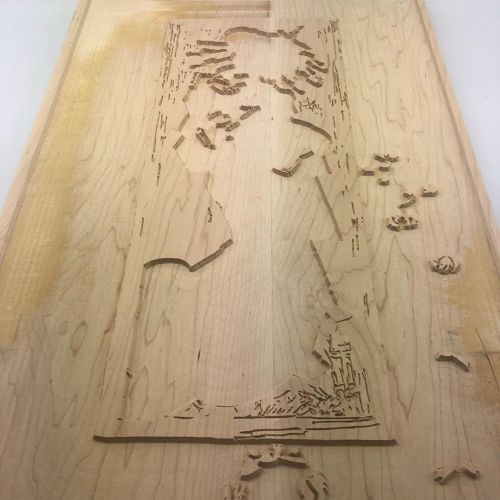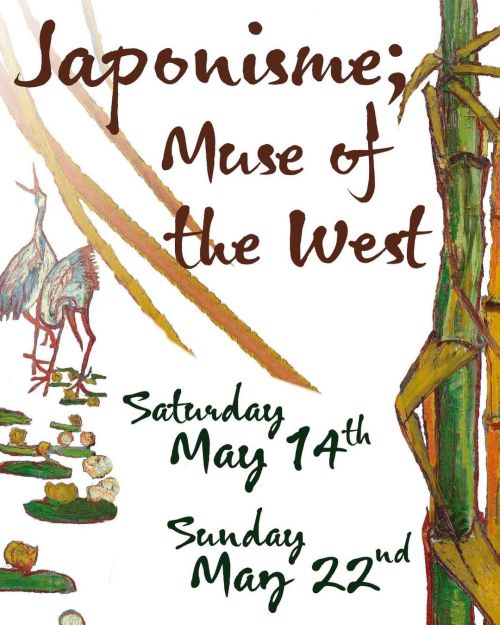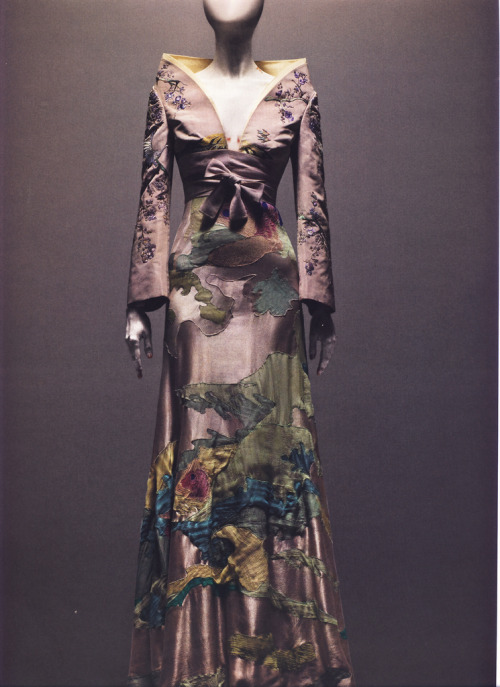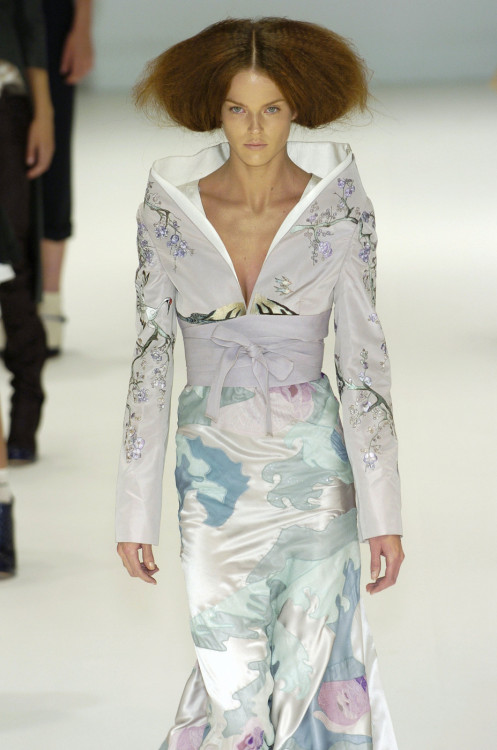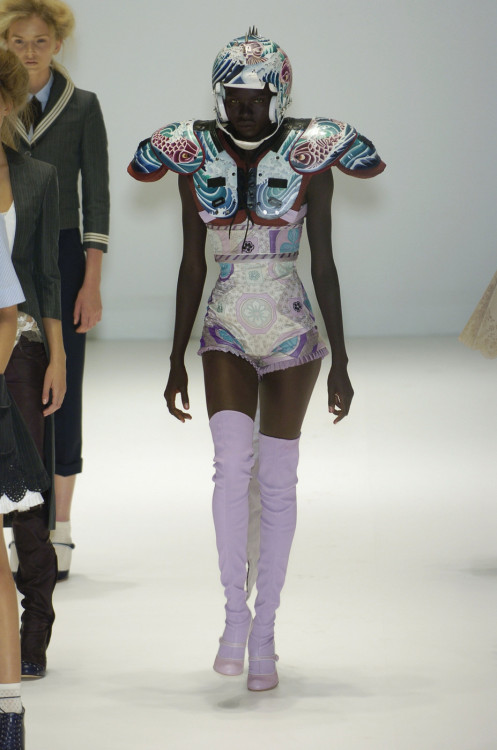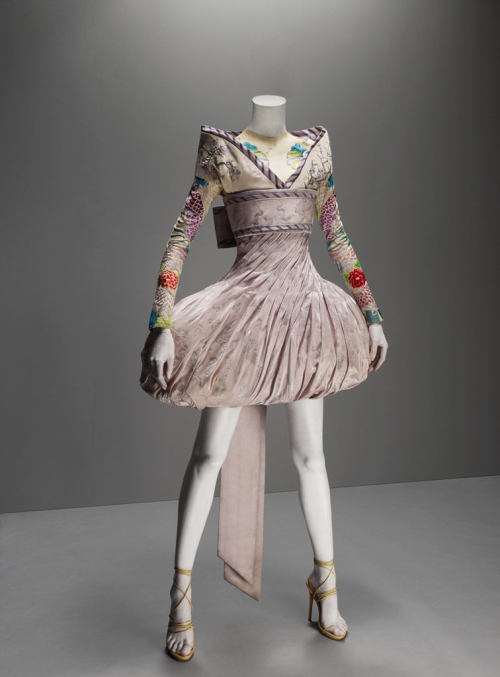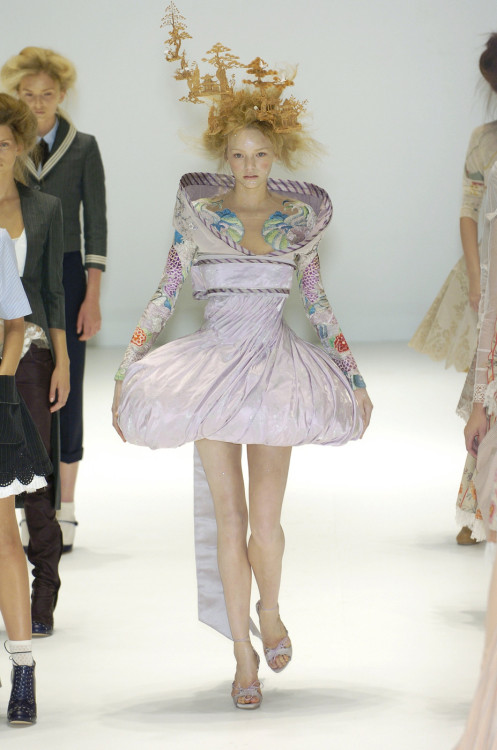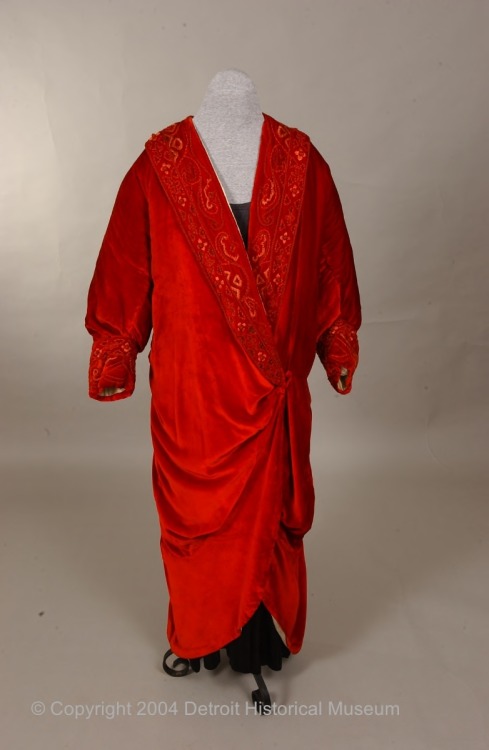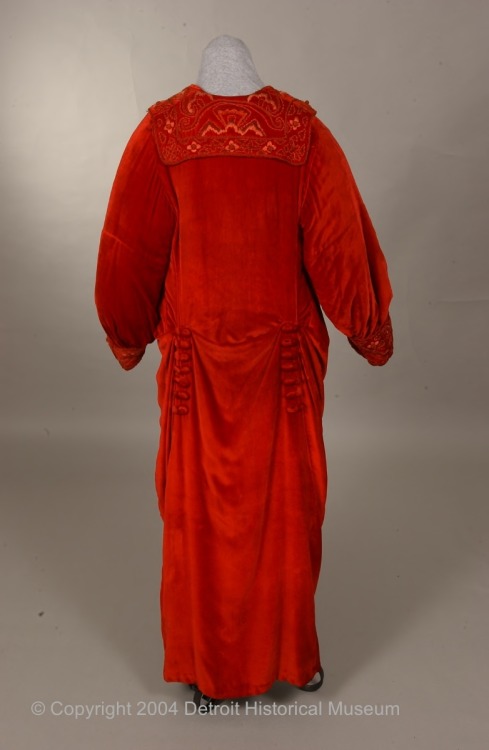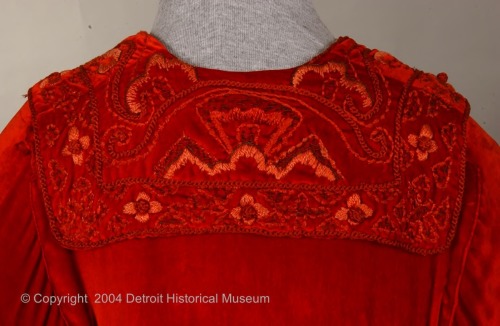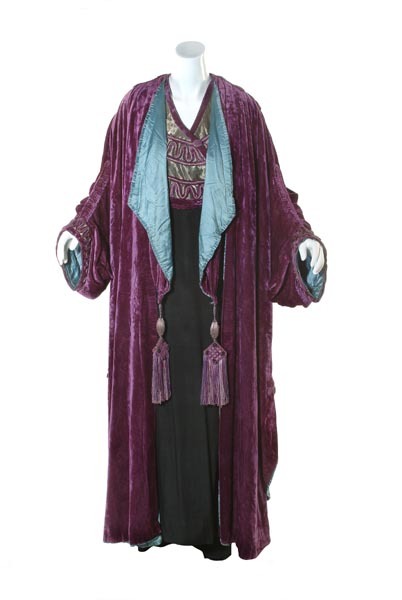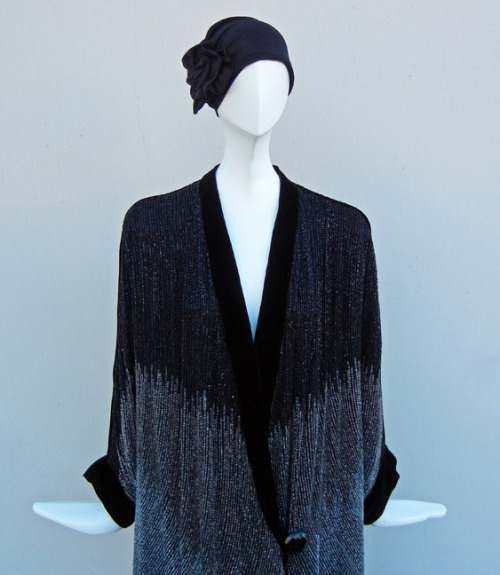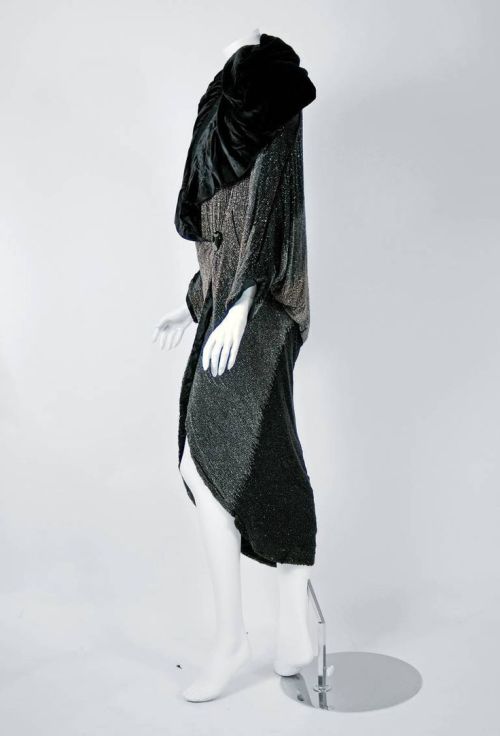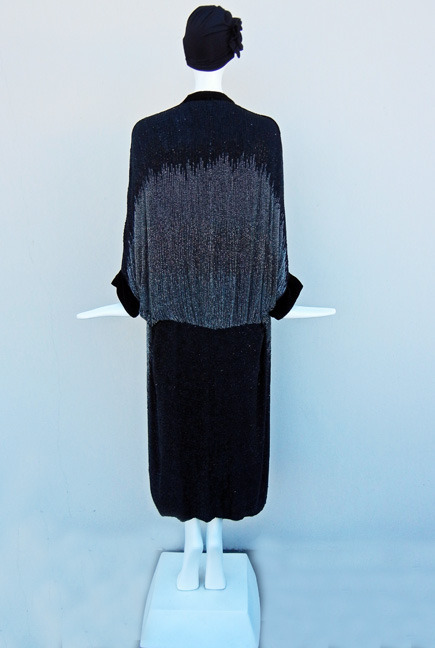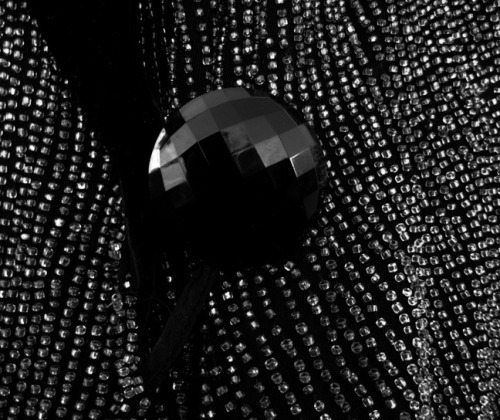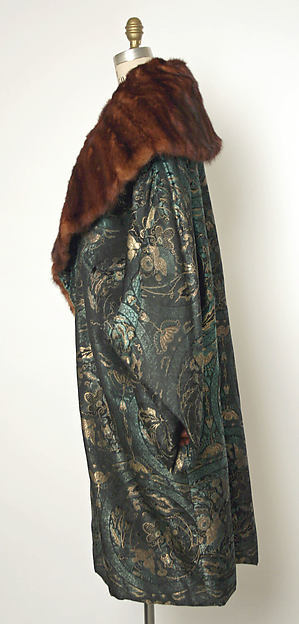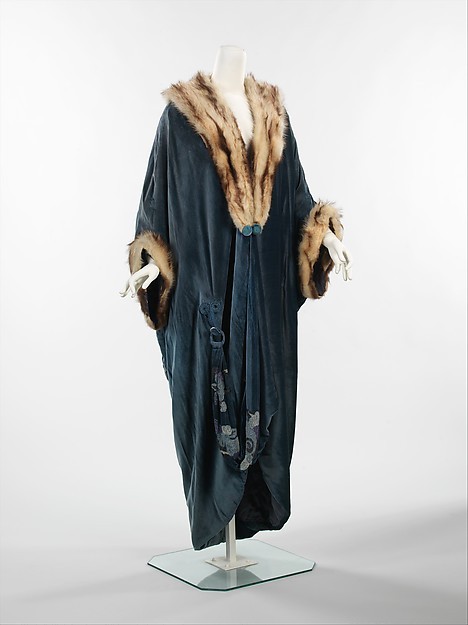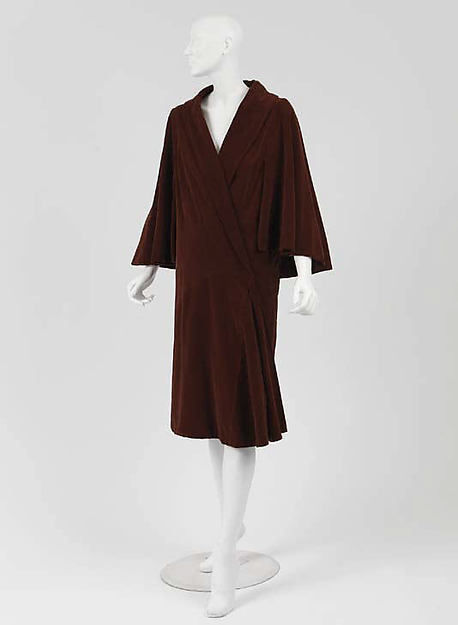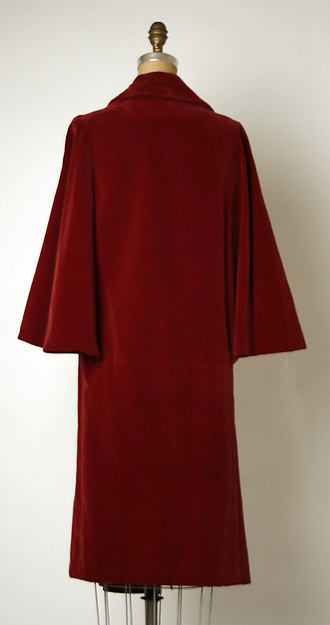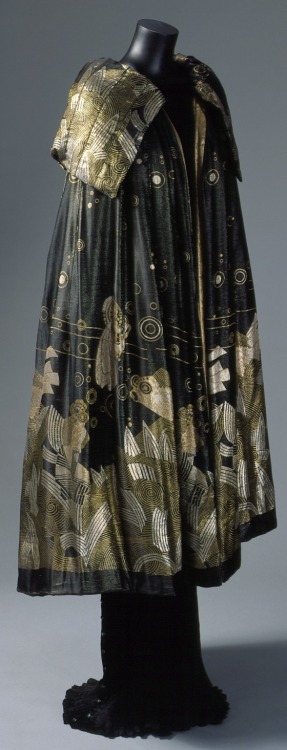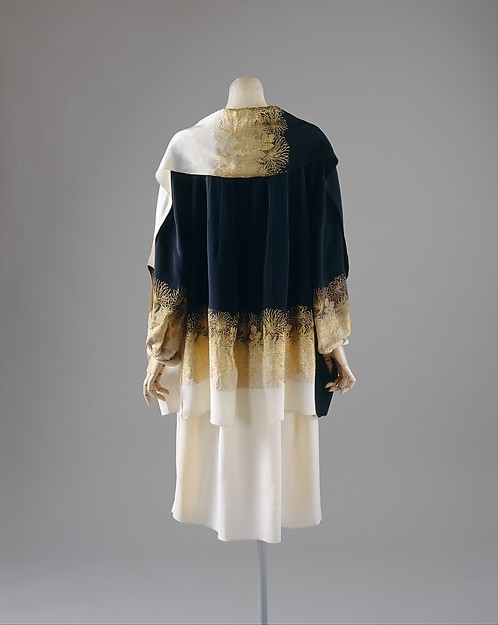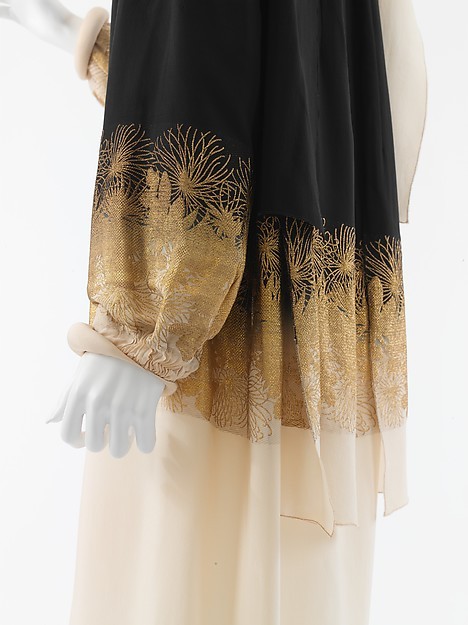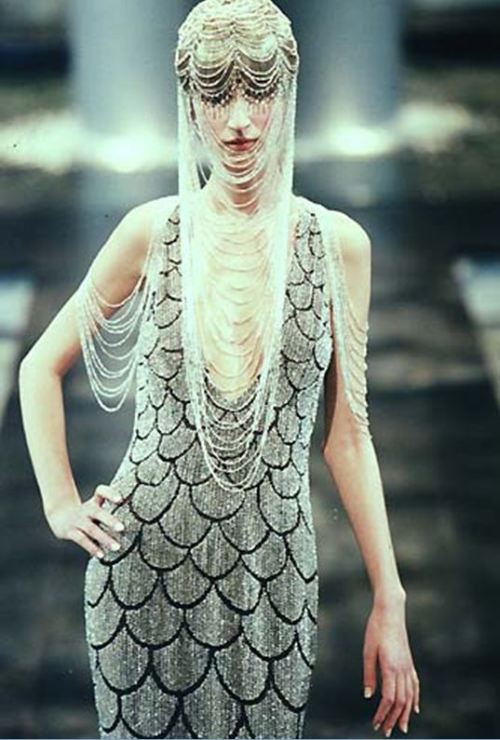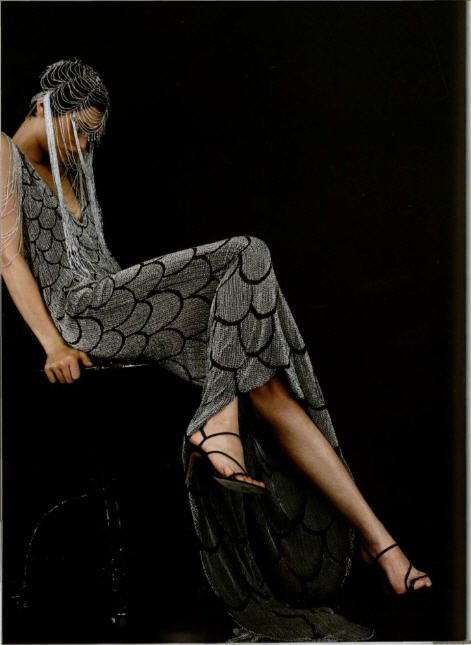#japonisme
MWW Artwork of the Day (4/8/16)
Vincent Van Gogh (Dutch, 1853-1890)
Japonaiserie: Flowering Plum Tree [after Hiroshige] (July-Sept. 1887)
Oil on canvas, 55 x 46 cm.
Van Gogh Museum, Amsterdam
At the Paris World Fair of 1867 Japanese culture burst upon the European scene with the force of a megaton bomb. Kimonos and bamboo screens became all the rage; Parisian ladies turned the tea ceremony into a competitive sport; Japanese woodblock prints appeared in every corner shop and were greedily snatched up by a public infected with “la fièvre japonaise.”
A few decades later, when the fever had subsided and the novelty had wore thin, an influential French critic, looking back over the phenomenon, declared that Japan had invigorated modern art in the same way that classical antiquity had the Renaissance. And the artist upon whom it had the most profound effect was Vincent van Gogh. As early as 1885 in Antwerp he started a collection of Japanese ukiyo-e prints, which by 1887 numbered in the hundreds. His enthusiasm went well beyond collecting: in spring 1887 he organized an exhibition of Japanese prints at the Cafe Tambourin, and that summer copied three prints, two by Hiroshige, in his personal collection. (Copying other works was the artistically unschooled Van Gogh’s method of learning.) Suddenly, the muted color palette of his Paris period brightened, previously shunned black-white contrasts appeared, the daring diagonals and jolting shifts in perspective of the prints found their way into his repertoire. Only one thing remained for Van Gogh, who never did anything in half-measures: he must “find his own Japan.” So he went to Arles, and the rest is, as they say, history.
This painting is a copy of a print in Hiroshige’s last collection, “One Hundred Famous Views of Edo.”
The MWW already contains a substantial number of works by Van Gogh in five separate exhibits, which include ALL his extant paintings, as well a selection of his drawings from each period. Extracts from Van Gogh’s literate and very revealing letters to his brother Theo accompany the pictures, along with the usual background information gleaned from many sources.
* Van Gogh in Holland (Oct. 1881-Feb. 1886)
* Van Gogh in Paris (March 1886-Jan. 1888)
* Van Gogh at Arles (Feb. 1888-April 1889)
* Van Gogh at St.-Rémy (May 1889-May 1890)
* Journey’s End: Van Gogh at Auvers (20 May-29 July 1890)
Post link
“Pionen” reproduction wallpaper by Lim & Handtryck
A wallpaper printed from the original rollers which has presumably been popular multiple times: Lim & Handtryck has rollers in wood with brass fittings, of cast iron, and even of rubber. This leads us to conclude that the wallpaper, whose illustrated peony design seems to be an example of japonisme, was likely first printed in the late 19th century, then during the 20s-30s, and again in the 50s-70s. This style of floral illustration with line shading is found in older printed textiles such as, for example, chintzes from India, which have inspired Western designers including William Morris, the leading figure of the English Arts & Crafts movement.
Post link
Thank you Hays High School Culinary Arts for providing such beautiful and delicious treats for us on Saturday! And thank you to all that we’re able to come out and enjoy a lovely afternoon of art by the creek. Didn’t get to make it out? That’s ok, we’re doing it all again THIS SUNDAY, MAY 22! Hope to see you then! #printmaking #artshow #art #fineart #ukiyoe #japonisme #darylhowardart #printmaker (at Daryl Howard Art: Japanese Woodblock Prints and Collage)
https://www.instagram.com/p/CdnziFauqqz/?igshid=NGJjMDIxMWI=
Post link
The libations are flowing and the breeze is blowing down by the cool creek! Will we see you here today? We’ll be here until 5 today!
#artshow #art #fineart #japonisme #woodblockprint #printmaking #ukiyoe (at Daryl Howard Art: Japanese Woodblock Prints and Collage)
https://www.instagram.com/p/CdjPpMmp8_u/?igshid=NGJjMDIxMWI=
Post link
Proofing continues!
Come check out this beauty, “hot off the press” this weekend!…
Studio Lecture & Demonstration: Join Daryl in her private studio as she discusses the history of the Japanese print and it’s impact on Impressionism and Post-Impressionism, followed by a live demonstration of the printmaking process.
.
Art at the Creek:
Come enjoy art at creek as we explore the immense impact Ukiyo-e had on the sensibilities of the Impressionists and Post Impressionists, who experimented and even emulated the style. Such examples can be found in the work of Vincent Van Gogh, James Whistler, Claude Monet, Mary Cassatt, Edgar Degas, Paul Gauguin, Edouard Manet, Pierre Bonnard and many others.
.
Serving Craft beer & Fine South African Wine
Catering by Hays High School Culinary Program
.
RSVP Online Now!
☝️Link in Bio☝️
Hope to see you in May…
#woodblockprint #printmaking #ukiyoe #mokuhanga #impressionism ##japanesewoodblockprinting #printmaker #art #fineart #artshow #japonisme (at Daryl Howard Art: Japanese Woodblock Prints and Collage)
https://www.instagram.com/p/CdV8dxNucTI/?igshid=NGJjMDIxMWI=
Post link
Woodblock cleanup time!
Did you know… the Impressionists and Post Impressionists amassed huge collections of Japanese woodblock prints throughout their lifetimes?
Did you know… Japonisme was an art movement coined and created in the late 1800, inspired by the influx of Japanese art and design in the West?
Van Gogh, Monet, Cassatt, Degas, Gauguin and many other artists of the time raved over the Ukiyoe print, each taking different concepts from them and applying it to their own work. Whether it be composition, color or subject matter, Ukiyoe gave new life to Impressionism. It has even been argued that Japanese printmakers were actually the first true Impressionists…
Come dive deeper into this fascinating history…
.
May 14 & 22, 2022
14100 Nutty Brown Road
Austin, Texas 78737
.
Serving craft beer , fine South African Wine
Catering by Hays High School Culinary Arts
.
RSVP Online Now!
☝️Link in Bio☝️
#artshow #fineart #printmaking #impressionistart #impressionism #vangogh #ukiyoe #mokuhanga #printmaker #darylhowardart #japonisme #inspiration
(at Daryl Howard Art: Japanese Woodblock Prints and Collage)
https://www.instagram.com/p/Cc6LJ0KF_Tl/?igshid=NGJjMDIxMWI=
Post link
Studio Lecture & Demonstration: Join Daryl in her private studio as she discusses the history of the Japanese print and it’s impact on Impressionism and Post-Impressionism, followed by a live demonstration of the printmaking process.
.
Art at the Creek:
Come enjoy art at creek as we explore the immense impact Ukiyo-e had on the sensibilities of the Impressionists and Post Impressionists, who experimented and even emulated the style. Such examples can be found in the work of Vincent Van Gogh, James Whistler, Claude Monet, Mary Cassatt, Edgar Degas, Paul Gauguin, Edouard Manet, Pierre Bonnard and many others.
.
Serving Craft beer & Fine South African Wine
Catering by Hays High School Culinary Program
.
RSVP Online Now!
☝️Link in Bio☝️
Hope to see you in May…
#woodblockprint #printmaking #ukiyoe #mokuhanga #impressionism ##japanesewoodblockprinting #printmaker #art #fineart #artshow #japonisme (at Daryl Howard Art: Japanese Woodblock Prints and Collage)
https://www.instagram.com/p/CcYZq_blKZ6/?igshid=NGJjMDIxMWI=
Post link
Modern Japanese Art.
The idea of modern art and modernity are premised on metaphors of space and time. Art history as a product of modernity carved up the world in the same way Imperial nation-states did. Japanese art was seen as “primitive” and its nearest equivalents were near Near-Eastern and African art. While Japanese art was a “pale pastiche” of European art, Japanese art and artifacts had been making their way to Europe as “decorative” objects and “primitive” Japanese art was very influential to European “masters”.
-Oscar Wilde observed in 1891, that Japan, for the west was merely an invention, a purely aesthetic fancy.
- Maurice Denis argued that painting oscillates perpetually between invention and imitation.
Japonisme is an oversimplified term for the influence of the arts of Japan on west. From the 1860s, ukiyo-e, Japanese wood-block prints, became a source of inspiration for many European impressionist painters in France and elsewhere, and eventually for Art Nouveau and Cubism. Artists were especially affected by the lack of perspective and shadow, the flat areas of strong color, the compositional freedom in placing the subject off-centre, with mostly a low diagonal axis to the background. Unlike other varieties of Orientalism, Japonisme mostly involved Western artists using elements of Eastern styles in works showing their own culture; if only because of the difficulty of travel, there were relatively few artists attempting Eastern scenes in a Western style.
Painting #1&2
Claude Monet Haystack, snow effect, (1891) & Haystacks Giverny, the evening sun, (1888). Compare to paintings #3&4, From the series Thirty-six Views of Mt. Fuji, Woodblock print by Katsushika Hokusai (1830’s). Also compare #5 Takahashi Yuichi’ Courtesan (1872) and #6 Vincent van Gogh The Courtesan (1887).
From the 1870’ to the mid-1900’s the structure of Japanese modern art and its institutions were shaped largely in response to Japonisme’s compulsion towards national and ethnic essentialism. Around 1910-1920 a younger generation of artists saw Japan’s influence on the work of western painters such as Monet and Van Gough. They saw this as an opportunity for their art to transcend national boarders. During this time the the Meiji government was pushing to modernize by modelling herself on the West.
Nihonga (Neo-traditional Japanese painting -both aesthetic and technique) and Yoga (Western style painting, specifically oil painting) became the two parallel streams of Japanese painting the originated and crystallized in the Meiji period. These two schools fought to control the direction modern painting would take in the future. It wasn’t really until the shift from the Meiji to Taisho period that Yoga became a naturalized art along side Nihonga. Modernism in Taisho-period Japanese art ways in many ways a response to the “cultural boomerang” of European Japonisme returning to Japan. For Japanese artists and critics, European Japonisme was proof that after many centuries, in the modern period of the arts the East and West had begun to converge.
Painting #7 Japan’s “pale pastiche” of western art. #7 Yorozu Tetsugorō’s Nude Beauty (1912) Oil on canvas.
Paintings #8 & #9 Nihonga and Yoga respectively. #8 Takahashi Yuichi’s Tofu (1888) & #9 Okada Saburosuke’s Kimono with Iris Patterns )1927) Oil on canvas.
Post link
Japonisme
Claude Monet (1840 – 1926) was a French impressionist painter.
The Highway Bridge Under Repair
Katsushika Hokusai (1760 – 1849) was a Japanese artist, ukiyo-e painter and printmaker of the Edo period.
Bridge
Post link
Ensemble
‘It’s Only a Game’
Spring/Summer 2005
Alexander McQueen
Bodysuit and obi-style sash of lilac silk satin and chiffon embroidered with silk thread; shoulder pads and helmet of fibreglass painted with acrylics.
Andrew Bolton: McQueen designed the 2005 collection It’s Only a Game around the idea of a chess match between America and Japan. Each ensemble corresponded to a particular chess piece.
The king appears as an American football player, with shoulder pads and a helmet covered in Japanese tattooing.In the runway show, the models moved as if they were pieces in a life-sized chess game, an idea inspired by a scene from Harry Potter. Taken as a whole, the collection revealed McQueen’s remarkable ability to look across cultures for inspiration.
Sources:|1|2|3|4|5|6|7|
Text:Met Museum | 1 |2 |
Post link
Ensemble
‘It’s Only a Game’
Spring/Summer 2005
Alexander McQueen
Dress and obi-style sash of lilac and silver brocade; jacket of lilac silk faille embroidered with silk thread; top of nude synthetic net embroidered with silk thread.
Andrew Bolton: McQueen designed the 2005 collection It’s Only a Game around the idea of a chess match between America and Japan. Each ensemble corresponded to a particular chess piece.
The queen wears a short, thigh-high dress, which is wide at the hips, a silhouette based on the eighteenth century. A kimono collar, obi sash, and an undershirt beautifully embroidered to look like tattooing are all drawn from Japanese culture. Next to her, the king appears as an American football player, with shoulder pads and a helmet covered in Japanese tattooing.
In the runway show, the models moved as if they were pieces in a life-sized chess game, an idea inspired by a scene from Harry Potter. Taken as a whole, the collection revealed McQueen’s remarkable ability to look across cultures for inspiration.
In McQueen’s Words
“[In this collection] the idea of the chess game meant that we looked at six different types of women, women on opposing sides. We had the Americans facing the Japanese and the redheads facing the tanned Latinos.”
Another Magazine, Spring/Summer 2005
Sources:|1|2 |4|5|6|7|8|9|
Text:Met Museum
Video:EditedfromYoutube
Post link
Evening Coat
J.Hock
1910-1913
Woman’s red velvet evening coat lined with white satin. It is a wrap-around “kimono” style with long dolman sleeves. The lapel and cuffs are trimmed with pink embroidery having metallic threads. Label: J. Hock, Detroit.
Post link
Evening Coat
Lucile
1911
Purple silk velvet and gold lame opera coat with silk satin lining and integral gold lame waistcoat.
Post link
Evening Coat
Liberty & Co.
1925
Orange silk rayon jacquard with yellow chrysanthemum pattern; cuffs, front opening and hem in gold rayon; collar of beaver.
Images and text taken from the book:
Fashion: A History from the 18th to the 20th Century, Kyoto Costume Institute, pgs 446-447.
Post link
Opera Coat
Jean-Philippe Worth
House of Worth
1912
In 1912, the dolman coat once again became a fashionable form of outerwear, reviving the silhouette that was popular during the 1870s and 1880s. Worn almost exclusively for evening, the coat’s draped silhouette was often cut like a kimono. The stunning velvet of this example by the House of Worth features oversized woodland flowers including cattails and jack-in-the pulpits.
Post link
Evening Coat
Paul Poiret
1924
Stunning cocoon evening coat of black georgette, hand beaded overall in lines of black beads switching to gray translucent beads with a geometric ragged edge formed at the color change. The coat has a velvet collar and edging at the aperture and velvet cord along the top of the shoulders extending down the full length of the arms. The dramatic dolman sleeves are emphasized by a careful placement of the beadwork pattern. The construction derives from draping techniques. The front falls from the shoulders and sweeps into a cutaway closure to attach at the lowered waist seam in the back. The coat has tremendous graphic impact with the beadwork shimmering and moving as the light hits the garment. Fully lined and faced with black silk.
Details of this coat published on full page (page 195) in the book, “Poiret: Paul Poiret 1879-1944”, by Yvonne Deslandres.
In addition, its draped construction with the minimal number of pattern pieces is typical of Poiret’s design techniques. The coat’s opulence and dramatic impact are hallmarks of Poiret’s style. Early in his career, he used the cocoon shape, which was inspired by traditional Japanese clothing.
This coat is a great example of the style which became known as Art Deco. The functional aspects of the design construction creates the geometric surface pattern of the beadwork and though minimal in form, the sculptural impact is dramatic and graphic in the round because of the graphics.
Post link
Evening Coat
Weeks (attributed)
French
1910-1912
The contrast of black chiffon over aqua satin contributes to this evening coat’s visual appeal. The use of tassels and braid trim reflect an Asian influence and the ongoing interest in Orientalism at the time.
Post link
Coat
Cristobal Balenciaga
House of Balenciaga
1927
Straight, mid-calf coat, based on the shape of a triangle. The large collar, crossover lapel, long sleeves and cuffs are decorated with ermine fur.
In this coat, made in San Sebastian, Balenciaga evoked the lines that define the Japanese kimono, one of the most influential garments in European fashion of the twenties. In perfect tune with the aesthetics of those years, the wide turndown collar and the sleeve cuffs were adorned with ermine fur.
Post link
Coat
House of Chanel
Gabrielle ‘Coco’ Chanel
1927
The convergence of Art Deco line, the modernist impulse to facilitate pure form, and Japonisme’s potential to offer a vocabulary of untailored wrapping shapes was more than fortuitous. Chanel uses a French ombré textile with pattern sources from the Japanese kimono but brings to it the ethos of chaste minimalism. As Western fashion designers discovered from the East that untailored lengths of fabric could constitute modern dress, the cylinder and the textile plane became the new forms for apparel.
(Last two image’s source 1|2)
Post link
Evening Coat
House of Chanel
Gabrielle ‘Coco’ Chanel
1927
Silk jacquard patterned with black and green graduation and gold chrysanthemum motif; matching tie-collar; two panels at back; wadded sleeve hems.
The chrysanthemum had often appeared as a fashionable motif sine the latter half of the nineteenth century. The textile with woven chrysanthemums in Japanese makie-like (gold lacquer) style represents the taste of Art Deco. The soft wadded cuffs are similar to the kimono’s fuki (wadded hem) in style.
Images and text taken from the book:
Fashion: A History from the 18th to the 20th Century, Kyoto Costume Institute, pgs 448-449.
Post link
Sirene Gown
Haute Couture
Givenchy
Alexander McQueen
1998
“McQueen’s silvery mermaid dress has the kind of glamour appeal a screen goddess lives for. Silver beaded dress on black crepe georgette.”
Bazaar US April 1998, Perchance To Dream
This gown is similar to a 1919 evening dress by Gustave Beer.
Post link

